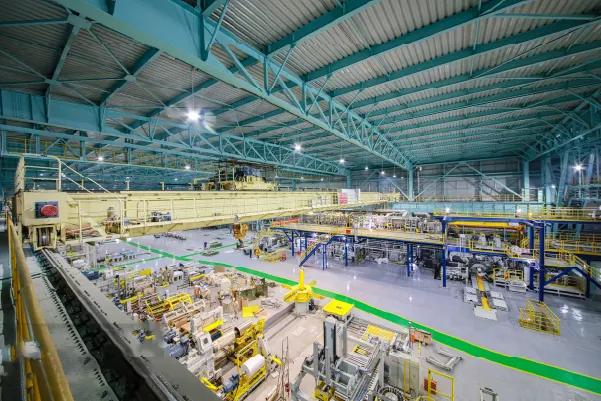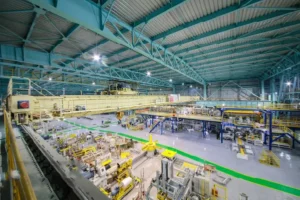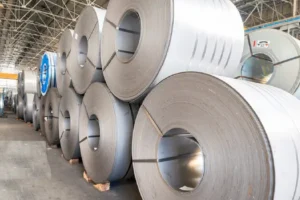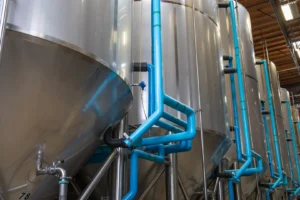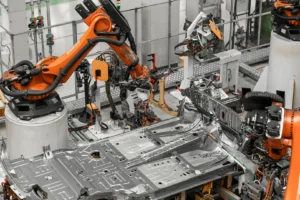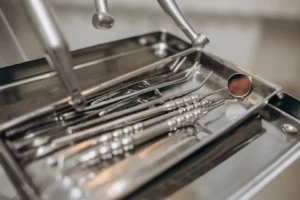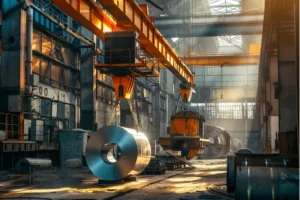316L Food Grade Stainless Steel: A Complete Guide for the F&B Manufacturing Industry
Ensuring food safety is non-negotiable. Using the wrong material risks contamination and brand damage. 316L stainless steel[^1] provides the ultimate solution for safety and long-term performance.
316L is an austenitic stainless steel grade containing molybdenum, which significantly enhances its corrosion resistance, especially against chlorides and acids. This non-reactive, durable, and easy-to-clean nature makes it the premier choice for food and beverage contact surfaces, ensuring product purity and safety.
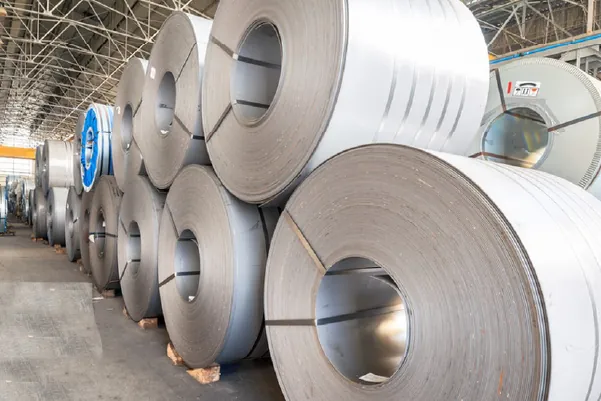
As the Global Business Director at MFY, I've seen countless businesses navigate the complexities of material selection. The choice of stainless steel isn't just a technical decision; it's a foundational pillar of your product quality, operational efficiency, and brand reputation. Let's explore why 316L has earned its place as the industry leader and how you can leverage it to your advantage.
What Exactly is 316L Food Grade Stainless Steel and How Did It Become an Industry Standard?
Understanding material grades can seem complex. Choosing the wrong one leads to premature failure and safety risks. 316L's specific chemical makeup makes it the definitive choice for food contact.
316L stainless steel is a low-carbon version of the 316 grade. Its key differentiator is the addition of molybdenum (typically 2-3%), which gives it superior resistance to corrosion from salts, brines, and acids commonly found in food products, unlike the more standard 304 grade.

To truly appreciate 316L, we have to look at its composition. The "L" stands for "low carbon," which is critical. A lower carbon content (below 0.03%) minimizes carbide precipitation[^2] during welding, a phenomenon that can lead to intergranular corrosion and weaken the equipment at its most vulnerable points—the seams. This feature alone is a massive advantage in fabricating the complex tanks, pipes, and vats used in food processing. It ensures that the entire system maintains its integrity and corrosion resistance after assembly.
The Molybdenum Advantage
The real hero in the 316L story is molybdenum. While standard 304 stainless steel is excellent for many applications, it struggles when exposed to chlorides, which are present in everything from table salt to cleaning solutions. Molybdenum fundamentally changes the steel's structure, making it far more robust against pitting and crevice corrosion caused by these chlorides. This is why 316L became the standard for industries dealing with more aggressive products like tomato sauces, brines for pickling, and processed meats. I remember a client in the dairy industry who switched from 304 to 316L for their cheese brine tanks; their maintenance calls dropped by over 80% in the first year.
A Quick Comparison
The choice between 304 and 316L often comes down to the specific application and the long-term vision for the equipment. Here’s a simple breakdown:
| Feature | Grade 304 | Grade 316L |
|---|---|---|
| Key Alloy | Chromium, Nickel | Chromium, Nickel, Molybdenum |
| Corrosion Resistance | Good | Excellent |
| Best For | General food processing, water | Salty, acidic, or high-chloride environments |
| Initial Cost | Lower | Higher |
| Lifecycle Value | Good | Excellent |
Ultimately, the adoption of 316L was driven by the F&B industry's relentless pursuit of purity and safety, aligning perfectly with increasingly stringent global food safety regulations.
Where is 316L Stainless Steel Used in Food and Beverage Manufacturing Today?
Identifying the right material for specific equipment is critical. A mismatch can ruin product taste, compromise safety, and lead to costly downtime. 316L's versatility makes it ideal for many applications.
316L is widely used for processing and storage tanks, piping systems, mixing vats, heat exchangers, and preparation surfaces. It is essential in dairy processing, brewing, winemaking, and for any products with high salt or acid content, like sauces and juices.
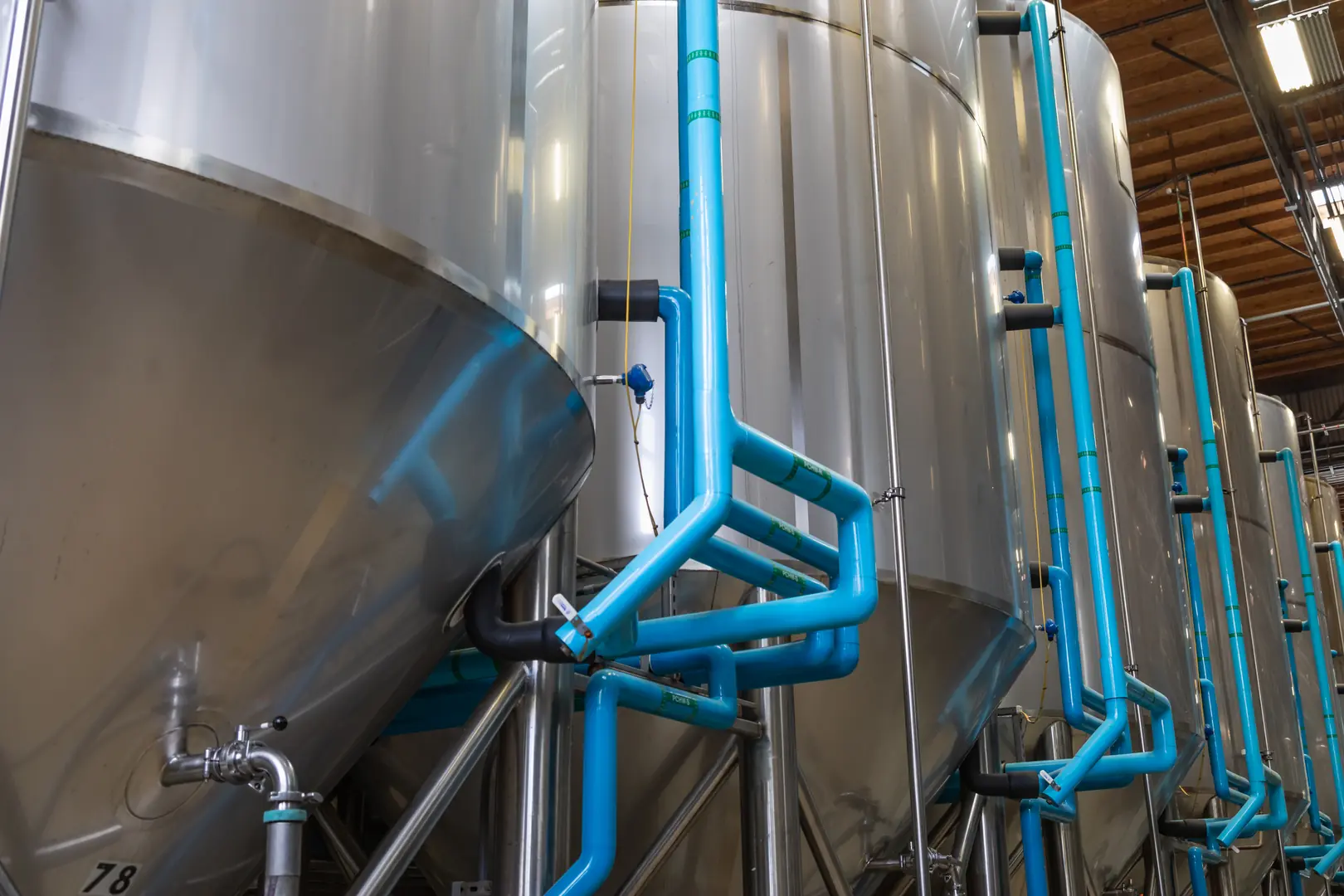
At MFY, we supply 316L stainless steel to a vast range of F&B sectors, and its applications are a testament to its reliability. The material’s non-reactive surface ensures that it doesn't impart any flavor or color to the end product, which is a non-negotiable requirement for consumer-facing brands. When a consumer trusts your brand for a consistent taste, the material science behind your equipment is the silent guardian of that trust.
Dairy, Brewing, and Beverages
In the dairy industry, hygiene is paramount. 316L is the material of choice for milk storage silos, pasteurizers, and cheese vats because it can withstand frequent and aggressive cleaning cycles with strong chemical agents without degrading. Similarly, in breweries and wineries, 316L is used for fermentation tanks and piping. The acidic nature of beer and wine can be corrosive, but 316L holds up beautifully, ensuring the delicate flavor profiles are preserved. A few years ago, we worked with an emerging craft brewery in Southeast Asia. They initially considered 304 to save on startup costs, but we convinced them that 316L was a better long-term investment. They've since told me it was one of the best decisions they made, as they've had zero issues with corrosion or product contamination.
Processed Foods and Pharmaceuticals
For manufacturers of sauces, juices, and processed foods, 316L is not just a preference; it's a necessity. The high concentrations of salt, vinegar, and citric acids in these products would quickly degrade lesser materials. You'll find 316L in everything from tomato paste evaporators to soup kettles and mixing vessels. Its utility even extends into the closely related pharmaceutical industry, where purity is just as critical. This crossover highlights the material's trusted status in environments where contamination is not an option.
What Are the Common Challenges with 316L Stainless Steel in F&B Operations?
316L is a fantastic material, but it isn't invincible. Ignoring its limitations can lead to unexpected maintenance costs and operational downtime. Understanding these challenges is key to proactive management.
The primary challenges associated with 316L stainless steel are its higher initial procurement cost compared to 304 and its susceptibility to stress corrosion cracking (SCC) in very specific, high-temperature, high-chloride environments if not managed properly.
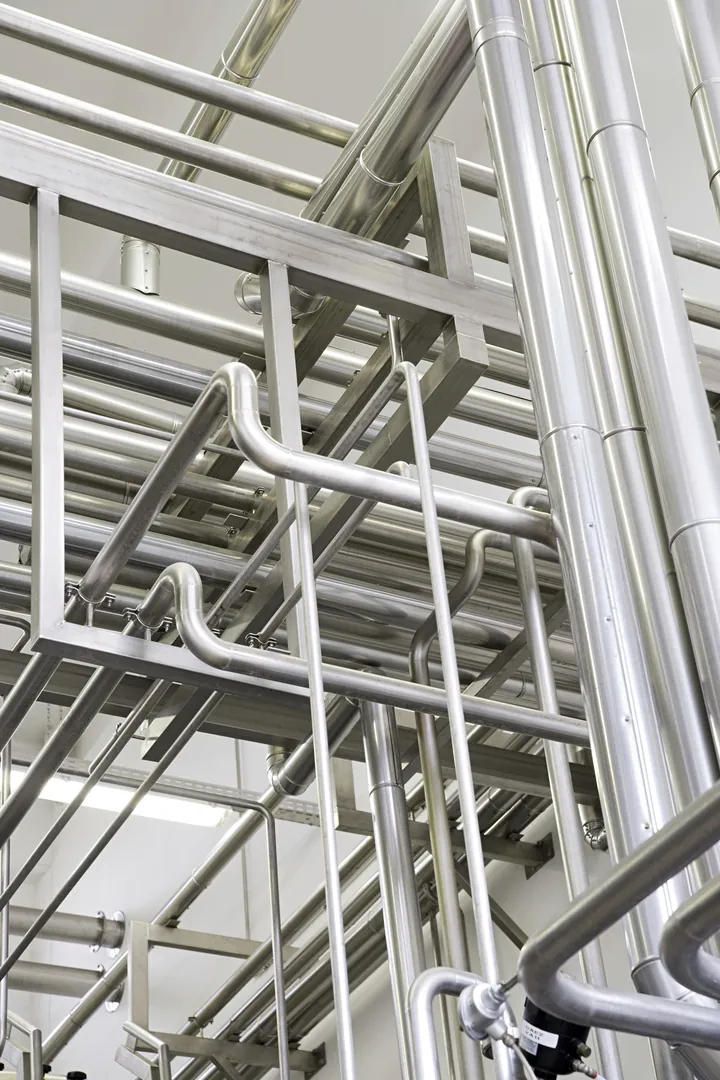
It's my job to give clients a complete picture, and that includes being honest about potential downsides. While 316L is incredibly robust, it has two main challenges that every facility manager should be aware of. Acknowledging them doesn't diminish the value of 316L; it empowers you to use it more effectively and protect your investment.
The Cost Consideration
The most immediate challenge is the upfront cost. The inclusion of molybdenum and a slightly higher nickel content makes 316L more expensive than 304. For large-scale projects, this cost difference can be significant, tempting some to opt for the cheaper material. However, this is a classic case of short-term thinking. We always advise our partners to consider the Total Cost of Ownership (TCO)[^3]. The higher initial investment in 316L is often recouped many times over through reduced maintenance, less downtime, and a longer equipment lifespan, especially in corrosive service. Choosing 304 for an application that demands 316L is a recipe for costly future replacements and potential product recalls.
The Corrosion Risk Under Extreme Conditions
While highly resistant, 316L is not completely immune to corrosion. In very specific and aggressive conditions—typically involving a combination of high temperatures (above 60°C or 140°F), high tensile stress, and concentrated chlorides—it can be susceptible to a phenomenon called Stress Corrosion Cracking (SCC)[^4]. This is not a common issue in most F&B applications but can be a risk factor in equipment like high-temperature evaporators or certain types of heat exchangers. Proper equipment design, regular inspection, and managing operational temperatures are crucial to mitigate this risk.
How Can Manufacturers Overcome Challenges Associated with 316L Stainless Steel?
Facing material challenges can be daunting. A poor strategy leads to wasted investment and operational headaches. However, proactive strategies can mitigate these risks and maximize the value of your investment.
Overcoming challenges involves adopting a Total Cost of Ownership (TCO) mindset for procurement, implementing rigorous cleaning and maintenance protocols, and partnering with a knowledgeable supplier who can provide guidance on proper application and fabrication.
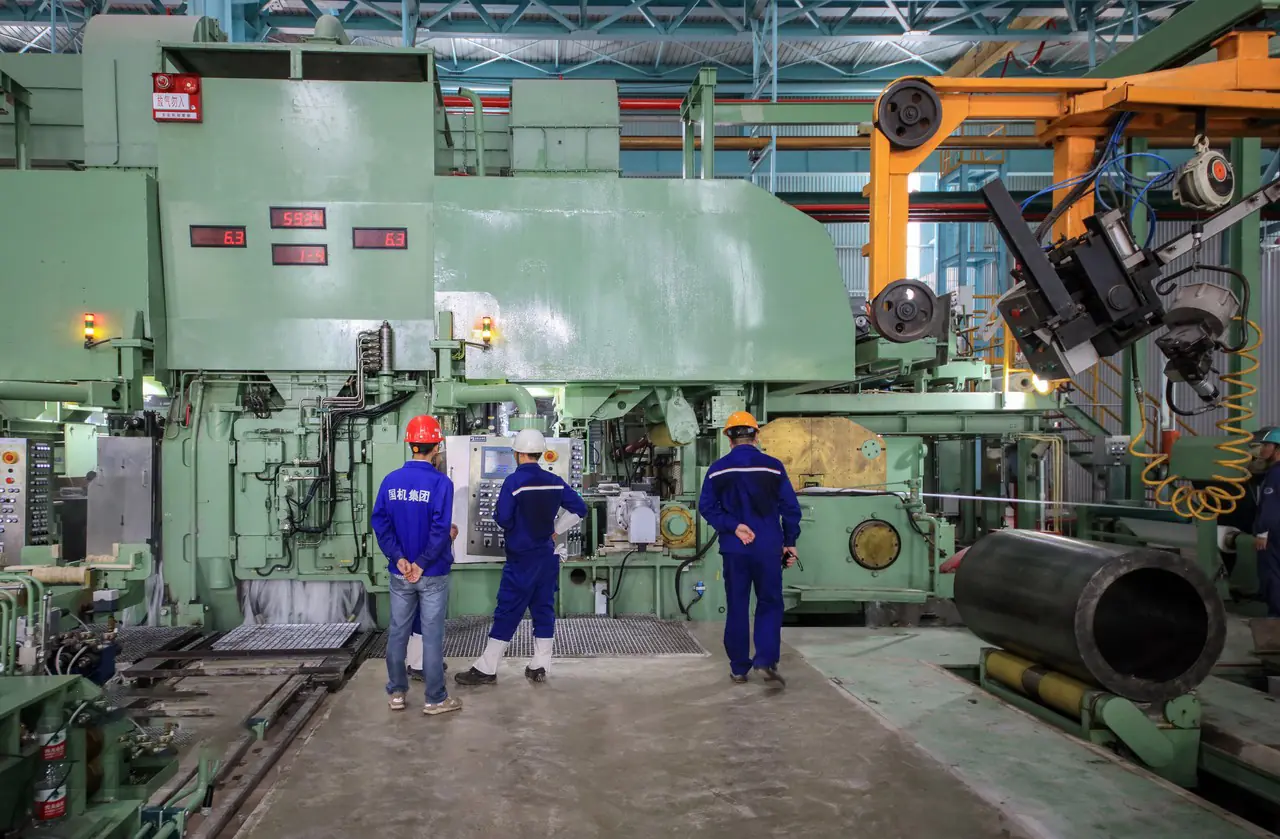
Turning challenges into strengths is what separates good operators from great ones. The key is to move from a reactive to a proactive approach. At MFY, we don't just sell steel; we provide solutions that ensure our clients get the maximum return on their material investment.
Smart Procurement and a TCO Mindset
The first step is to shift the conversation from purchase price to lifecycle value. When you evaluate 316L based on its TCO, the higher initial cost is framed as an investment in longevity, safety, and brand protection. A processing tank that lasts 30 years with minimal maintenance is far cheaper than one that costs 20% less but needs to be replaced in 10 years. Furthermore, as consumers increasingly value sustainability, choosing a durable, long-lasting material like 316L becomes part of your brand's story. It demonstrates a commitment to quality and responsible manufacturing, which is a powerful marketing tool.
Best Practices in Maintenance and Operation
Proper care is essential to preserving the passive layer that protects stainless steel from corrosion. This means developing and adhering to strict Standard Operating Procedures (SOPs) for cleaning and sanitation.
- Use the Right Cleaners: Avoid cleaners containing high levels of chlorides (like hydrochloric acid).
- Rinse Thoroughly: Always rinse equipment with clean water after sanitation to remove any chemical residue.
- Regular Inspections: Periodically inspect surfaces, especially welds and crevices, for any signs of pitting or discoloration.
I worked with a beverage company that was experiencing minor corrosion issues despite using 316L. A quick audit revealed their nighttime cleaning crew was not rinsing the equipment properly, leaving sanitizing solution to sit on the surfaces overnight. A simple training update completely solved the problem.
What Are the Key Technical Recommendations for Using 316L in F&B Production?
Technical details can be overwhelming for non-engineers. Getting them wrong, however, can compromise the integrity of your entire system. Following a few key principles ensures long-term success.
Key recommendations include specifying an appropriate surface finish (like No. 4 or 2B for cleanability), using the correct welding procedures with matching filler metals (e.g., 316LSi), and ensuring proper post-weld cleaning and passivation to restore corrosion resistance.
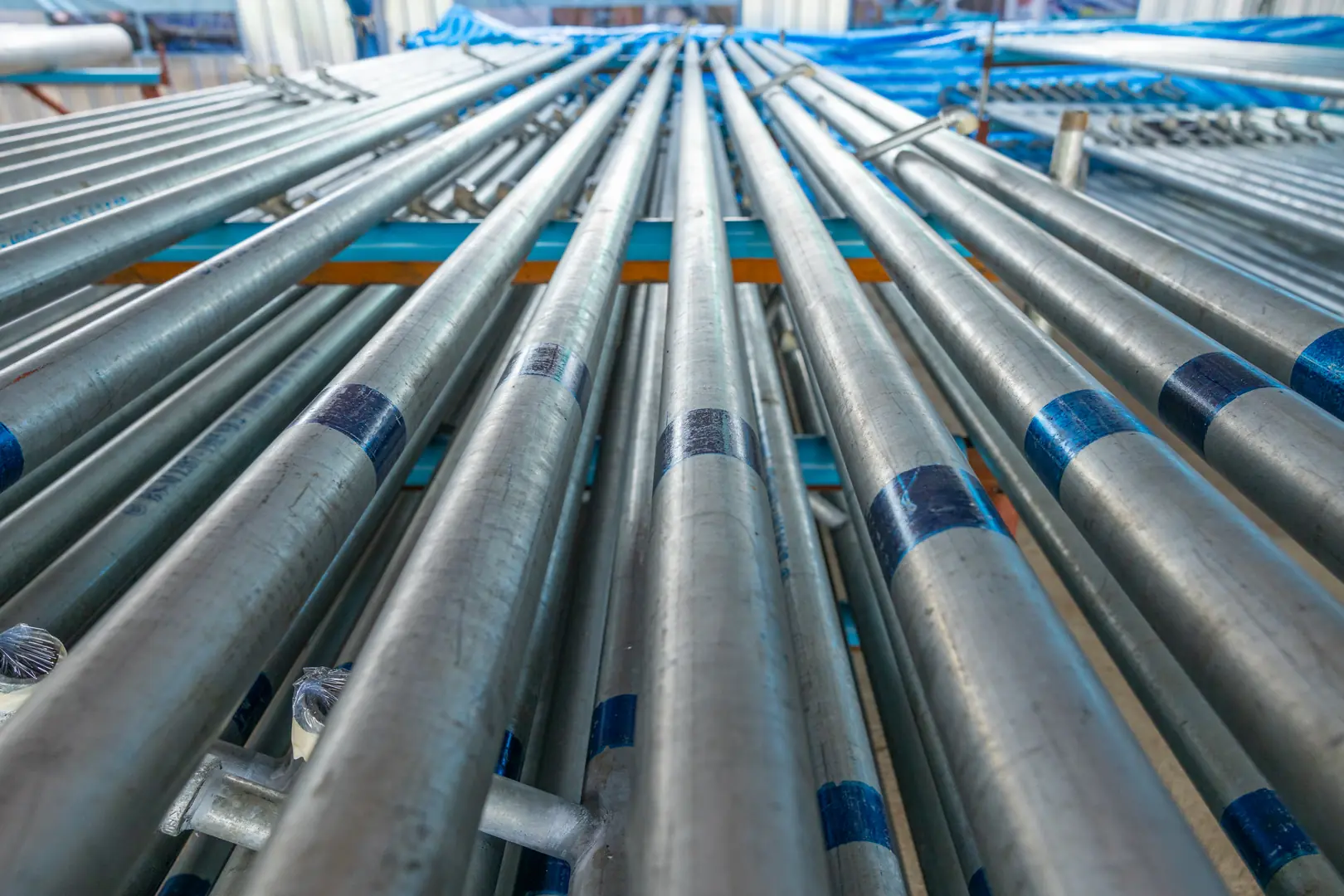
The performance of 316L isn't just about the raw material; it's about how it's handled, fabricated, and finished. As a supplier, we feel a responsibility to ensure our clients understand these critical technical points. Getting these details right from the start prevents a host of problems down the line.
Surface Finish and Welding Integrity
The smoothness of a surface directly impacts how easy it is to clean and how resistant it is to bacterial growth. For F&B applications, a polished finish like a No. 4 is often specified for its excellent cleanability. Welding is another critical area. Using the wrong filler material or poor technique can destroy the corrosion-resistant properties of 316L at the joint. It's crucial to use a low-carbon filler rod (like 316L) and ensure the weld is smooth and free of crevices where bacteria can hide.
Post-Fabrication Passivation
After any fabrication process like welding, cutting, or grinding, the steel's passive layer can be damaged. Passivation is a chemical treatment (typically with a mild acid) that removes free iron from the surface and helps rebuild this protective chromium-oxide layer. This final step is absolutely essential to ensure the equipment has the maximum possible corrosion resistance before it goes into service.
Here is a summary of our top technical recommendations:
| Recommendation | Why It's Important | MFY's Approach |
|---|---|---|
| Specify Surface Finish | A smoother surface (e.g., No. 4) is easier to clean and more hygienic. | We provide coils and sheets with certified finishes to meet F&B standards. |
| Use Correct Welding Filler | Prevents weld decay and maintains corrosion resistance at the seams. | We advise clients on the proper 316LSi or similar filler metals. |
| Ensure Full-Penetration Welds | Eliminates internal crevices that can harbor bacteria and cause corrosion. | We connect clients with fabricators skilled in sanitary welding techniques. |
| Perform Passivation | Restores the protective passive layer after fabrication. | We provide clear guidelines on post-fabrication treatment for our materials. |
Conclusion
316L stainless steel is the definitive material for F&B manufacturing due to its superior corrosion resistance and ability to ensure food safety. While it requires a higher initial investment, its long-term durability, low maintenance, and role in protecting brand integrity make it the most cost-effective choice.
Have Questions or Need More Information?
Get in touch with us for personalized assistance and expert advice.
